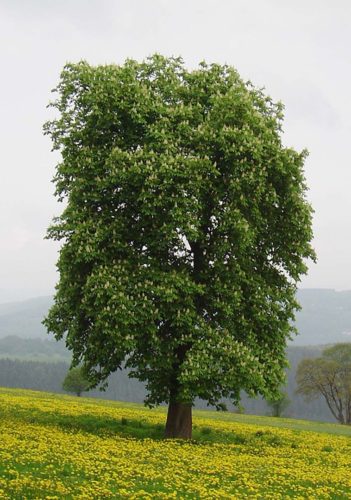Horse chestnut; tree that can grow over twenty-five feet tall with a broad crown.
Do not confuse with:
Sweet chestnut (Castanea sativa)
Also known as:
Buckeye
You are viewing the mobile-adapted version of the page.
The one for tablets, laptop and desktop also provides general information, such as origin, toxicity and cultivation.
Horse chestnut – (Aesculus hippocastanum), tree that can grow over twenty-five feet tall with a broad crown. The horse chestnut is a tree of the Northern Hemisphere.
The white horse chestnut (Aesculus hippocastanum) is most common; the red horse chestnut (Aesculus ×carnea) is seen less frequently. The red variety also remains a bit lower in height, but still a respectable 20 meters.
Bugs
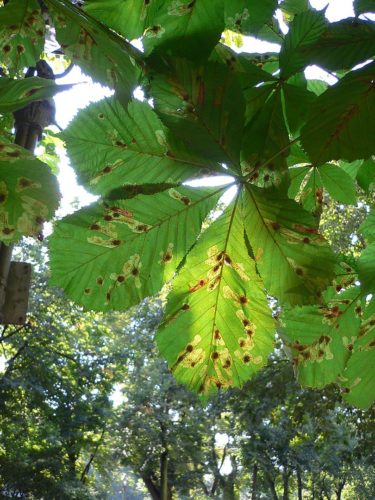
Mesophyl is eaten from the leaf, causing brown spots; the leaf turns to brown and dies: Horse chestnut leaf miner (Cameraria ohridella).
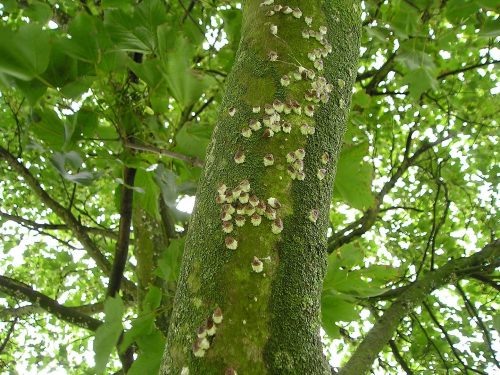
Brownish aphids populate the stem: Horse chestnut scale (Pulvinaria regalis).
Fungi & diseases
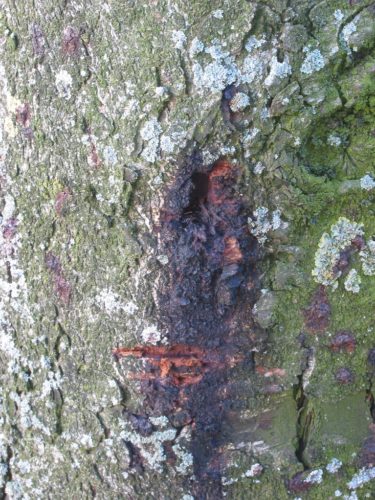
Moist, brown spots develop on the bark of the trunk that secrete a viscous fluid: Horse chestnut bleeding canker.
The leaves wilt suddenly because the sap flow is disrupted. Eventually, the trees die: wilt (Verticillium spp).
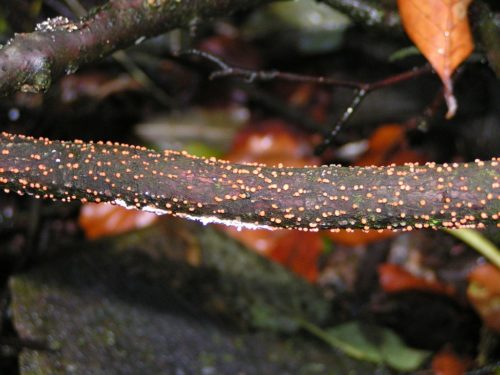
Small, orange-red mushrooms appear on affected branches, which can be either dead or living branches: Coral spot (Nectria cinnabarina).
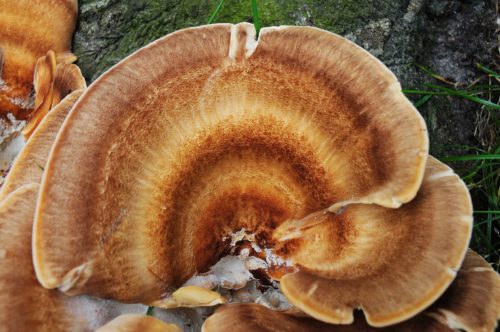
Between 50 and 200 cm tall fungi with several flat, semicircular caps at the base of the tree. Initially light brown; later darker in color (reddish brown): giant polypore (Meripilus giganteus).
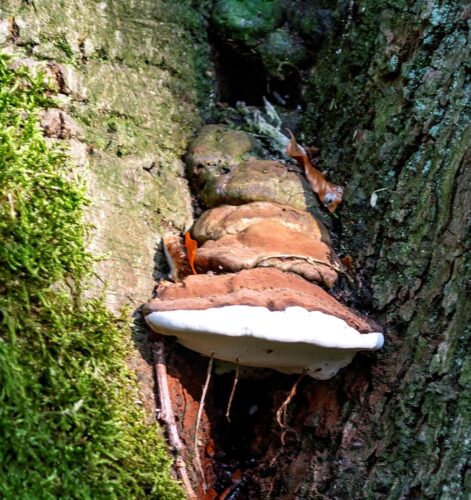
The light brown fungi have a white edge and the underside with the pore layer is pale white. Sometimes the fungi grow tile-like on top of each other. The top of the fungus and the surrounding area are often dusted with reddish-brown spores: Southern bracket (Ganoderma australe).
Other
A chestnut only flowers after about fifteen years. Under poor growing conditions, the tree flowers earlier – the so-called stress-induced flowering – and much later under very good growing conditions.

